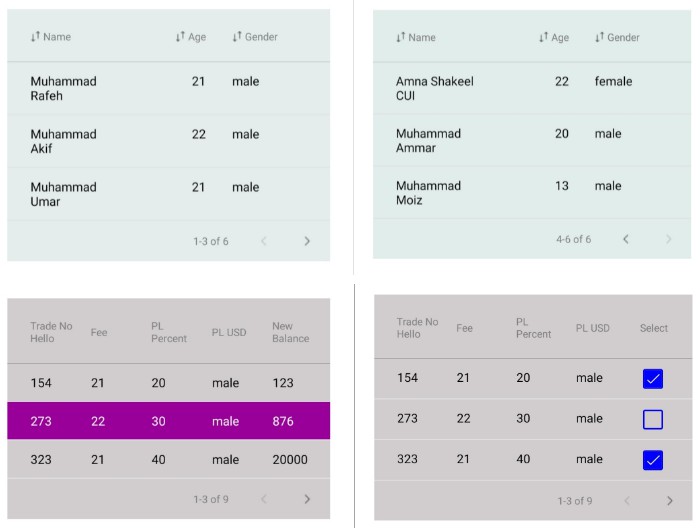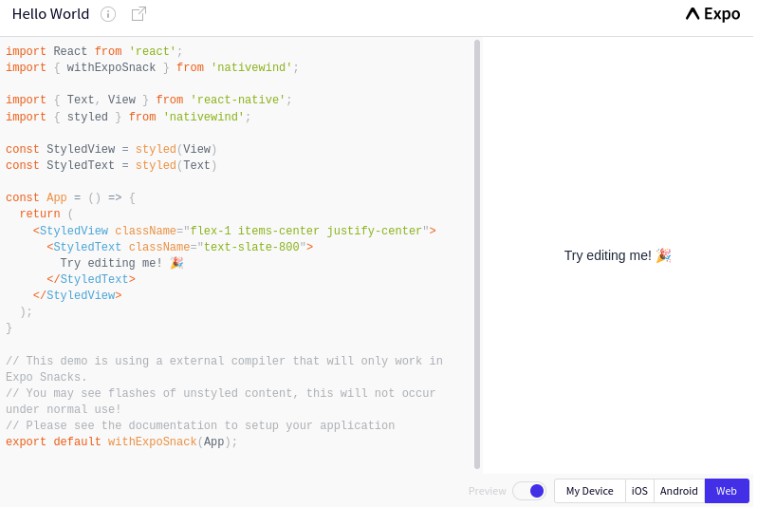tailwindcss-react-native
Use Tailwindcss in your cross platform React Native applications.
This library is currently under active development.
- ✨ native support for multiple platforms
- ✨ respects tailwind.config.js
- ✨ fast refresh compatible
- ✨ supports dark mode / media queries / arbitrary classes
- ✨ compatible with existing styles
- ✨ Server Side Rendering (SSR) on Web (including responsive styles)
Already using another RN library for Tailwind? Find out why you should switch.
Getting started
Install the library
npm install tailwindcss-react-native or yarn add tailwindcss-react-native
Add tailwindcss-react-native/babel to your babel plugins
// babel.config.js
module.exports = {
plugins: [
'tailwindcss-react-native/babel'
],
}
Add the TailwindProvider to your application
import { TailwindProvider } from 'tailwindcss-react-native'
function MyAppsProviders ({ children }) {
return (
<TailwindProvider>{children}</TailwindProvider>
)
}
tailwindcss peerDependency
This package has a peerDependency of [email protected]. You can install it with npm install tailwindcss or yarn add tailwindcss
Typescript support
Create a file (eg. src/tailwindcss-react-native.d.ts) and paste this line
import "tailwindcss-react-native/types.d"
Web only
webrequires[email protected]+(currently in preview). Please see this PR for more info. If your are currently using<=0.17you can still usenativefor rendering within a browser.
If using { platform: 'web' } you will need to follow the follow the TailwindCSS installation steps to include it’s styles in the application.
Usage
Simply add a className attribute to your existing react-native components
<Text className="font-bold">
You can combine it with existing styles
<Text className="font-bold" style={styles.text}>
Or perform computed logic
export function Test({ isBold, isUnderline }) {
const classNames = [];
if (isBold) classNames.push("font-bold");
if (isUnderline) classNames.push("underline");
return (
<Text className={classNames.join(" ")}>Hello world!</Text>
);
}
Options
Options can be provided via the babel config
// babel.config.js
module.exports = {
plugins: [
['tailwindcss-react-native/babel', { platform: 'native' }]
],
}
| Prop | Values | Default | Description |
|---|---|---|---|
| platform | native, web, native-inline, native-context |
native |
Specifies how the className is transformed (see platforms |
| tailwindConfig | Path relative to cwd |
tailwind.config.js |
Provide a custom tailwind.config.js. Useful for setting different settings per platform. |
How it works
Under the hood, tailwindcss-react-native performs these general steps
- Use
postcssto compile the classes usingtailwindcssand other plugins - Convert the CSS styles to the platform specific styles (eg using
StyleSheet.createfor native) - Remove the
classNameattribute and replace/merge it with thestyleattribute - Utilises a
reacthook for matching media queries.
See the platforms documentation for a more detailed explaination)




